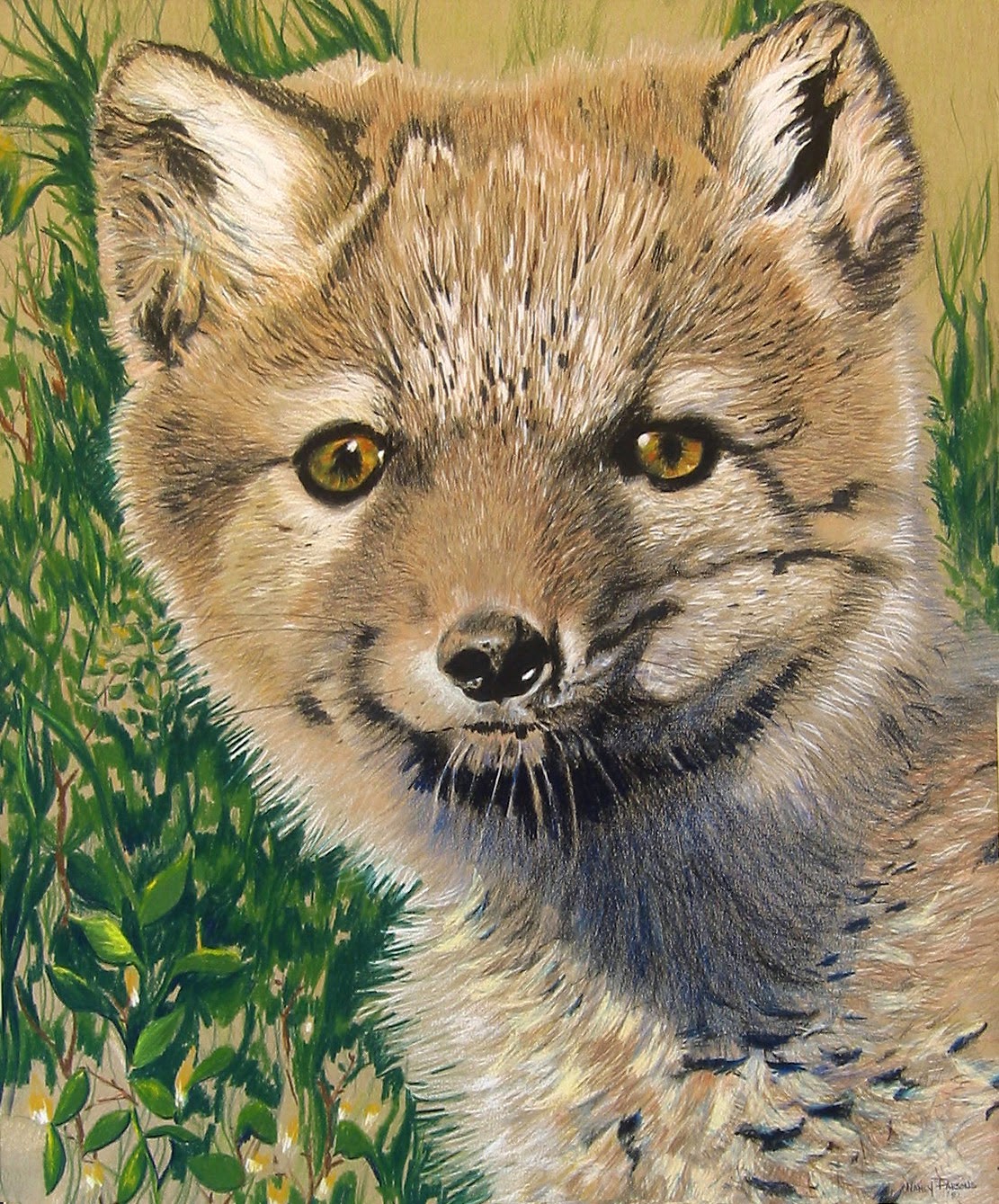 |
| SOLD "Arctic Fox", 29x24", Prismacolor on Cranson paper |
A smaller cousin of the red fox, the arctic fox's fur camouflages to white in winter and brown gray in summer. The species can be found throughout the Arctic tundra, Alaska, Canada, Greenland, Russia, Norway, Scandinavia and Iceland.
Arctic fox were one of the first mammals to colonize Sweden and Finland at the end of the Ice Age. As the ice retreated they remained in the mountain tundra areas. High hunting pressure led to a drastic population decline in the early 1900s. The arctic fox has not recovered despite protection and most likely would have gone extinct in this region.
The major threats for this fox species are lack of rodents and increased competition from the red fox which take over dens and kill the arctic fox. The increased abundance of red fox in the tundra in northern regions is most likely caused by climate change. With increasing average temperatures, the loss of sea ice, and greater tree coverage in the region predator red fox populations have increased.
ARTIST STATEMENT
My
goal in this series of endangered species, created in the mid-80s, was
to capture the souls and spirits of our mute neighbors with whom we
share the planet. I was captivated and haunted by the frank eyes of all
of these creatures, so human in their longing and need, pleading
silently for their future and ultimate survival.
This is the final drawing from my endangered series.
Thanks for viewing,
nancy
This is the final drawing from my endangered series.
Thanks for viewing,
nancy
To see more of my art or to contact me: Online Gallery • E-mail • Website • Graphic Design Studio • Saatchi Gallery • Fine Art America





